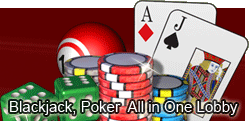
Shan-liu Backgammon: The Chinese Way to Play
Ever since its origin in Persia, there is perhaps no part of the world in which a variant of the backgammon game has not been played. The precise backgammon rules may have been different, even the backgammon accessories may have been different but the game would have resembled the backgammon game in a generic sense. There has been a history of backgammon in China as well, where the game was known as Shan-liu backgammon.
The Persian version of the backgammon game was known as Nard. The resemblance of Nard to the modern backgammon game is apparent. Nard was played on a backgammon board using thirty checkers. The movement of the checkers was controlled by the roll of two dice. It is believed that backgammon in China came through the Silk Route from Persia via India. Shan-liu backgammon, as the game was known locally in China, was well established by 700 AD. Incidentally Shan-liu means double six, which is the maximum roll possible with two dice. There is a reference to Shan-liu backgammon in the book 'Chinese Games with Dice and Dominoes' written by Stewart Culin. Tshu-pu backgammon was another variant of backgammon in China.
Archaeological evidence of Shan-liu backgammon in China has also been found. 27 conical checkers of a backgammon game were discovered in a tomb from the Sui-period (581-618). 13 of the checkers were mage from green glass and 14 from agate. In the early Tang-period (618-907) tombs small ceramic replicas of backgammon boards were found. The backgammon boards had rows of rectangles on either side for placing the backgammon checkers.
|
|

